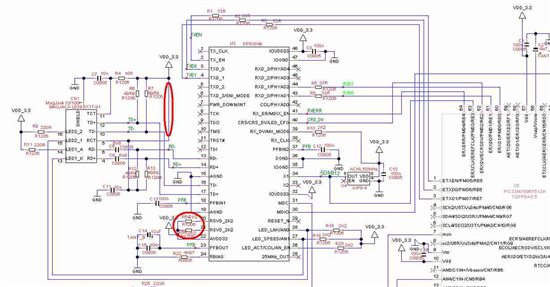Hi,
I have tried to debug the connection to DP83848 to no avail, and will definitely appreciate any input.
here is my test with an oscilloscope:
PWR_DOWN (pin 7) - 3.3v
RX_DV/MII_MODE (pin 39) pulled up to 3.3v --> configured as RMII mode
AVD33 (pin22), IOVDD33(pin32, 48) - 3.3v
X1 (pin 34) - 50 Mhz from osc
MDC (pin 31) - 1.5Mhz
I wanted to try the simplest test, which is to read in the PHY_ID (register 02 and 03) but no reply is given back. I have probed the MDIO and MDC signal, the clock is good, and the MDIO shows the correct signal sent to PHY but there was no reply from PHY. I have sent to default phy address 00001h.
I checked the PHY address pins on DP83848, and something seems weird to me:
In the datasheet it was mentioned that the PHYAD[0] has weak internal pull-up resistor. In my board, the PHYAD[0] (pin 42) was left floating but probing this pin shows 0v instead of being pulled high. Is there any settings that can caused this? If the PHYAD[0] is indeed low (0v), then the phy address sent by the mcu is wrong.
Some further questions:
1) Is the MDIO/MDC available in both MII and RMII mode to access the registers in DP83848?
2) What will be the simplest test to check if DP83848 is alive / communicating?
3) Also for curiosity, after DP83848 is powered up, and WITHOUT any software configuration, should any/both the LED light up if the RJ45 is connected to a computer and assuming the magnetics/MAG jack are working good?


